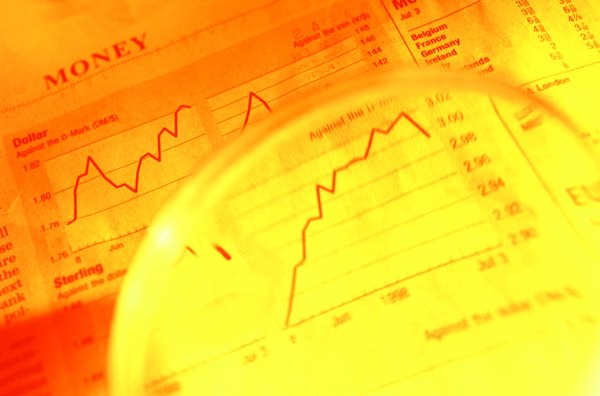The Effect of Public Offering on Stock Price
Stock prices can waver after a stock offering, but the funds they generate can fuel long-term growth.
John Foxx/Stockbyte/Getty Images
A public offering is a corporation’s sale of stock shares to the public. The effect of a public offering on a stock price depends on whether the additional shares are newly created or are existing, privately owned shares held by company insiders. Newly created shares typically hurt stock prices, but it’s not always a sure thing.
Tip
The effect of a public offering on stock price will ultimately be determined by the specific type of shares offered. If the shares are being newly created, for example, this could dilute the share price and lower the per-share return.
Understanding Dilutive Offerings
Stock shares represent a partial ownership of the company. The more shares you hold, the bigger the slice of the company you own. As an owner, you are entitled to vote at corporate meetings and to participate in the growth of the company through dividends and higher share prices. One measure of share value is earnings per share (EPS), which is the annual profit of the corporation divided by the number of shares.
The money raised by a public offering is not earnings. Dilution occurs when new shares are offered to the public, because earnings must be divvied up among a larger number of shares. Dilution therefore lowers a stock’s EPS ratio and reduces each share’s intrinsic value. The inverse of EPS is known as the price/earnings ratio, or P/E. All things being equal, a dilutive offering reduces earnings per share, so price should fall to maintain the same P/E ratio.
Dilutive Offering Example
Suppose a company had previously issued 1 million shares and earned a profit of $50M this year. The EPS is therefore $50M/1M, or $50. The price per share happens to be $180 before a new offering, at which time the company issues 100,000 new shares, creating a an EPS of $45.45 ($50M/1.1M). The price/earnings ratio before the sale is $180/$50, or 3.6. To maintain the same P/E ratio post-sale, the stock price must fall to $163.62 (that is, 3.6 x $45,45).
Exploring Non-Dilutive Offerings
Some secondary offerings are non-dilutive because they don’t involve the creation of new shares. Frequently, when a company offers public shares for the first time (an initial public offering, or IPO), corporate insiders such as founders, directors and venture capitalists are barred from participating. Instead, they must wait a certain amount of time, called a lockup period, before they can sell their shares to the public.
A non-dilutive secondary offering occurs at the end of a lockup period when insiders cash out their shares all at once. No new shares are created and no dilution of EPS occurs. Therefore, no price change need occur due to this type of public offering
A Word of Caution
A dilutive stock offering should lower prices, assuming the demand remains unchanged. However, that isn’t always a safe assumption. For example, a company known as CRISPR Therapeutics A.G. saw stock prices rise 17 percent on the day it announced a dilutive secondary offering in January 2018.
This can only be due to an increase in demand. While the reasons aren't always be certain, it’s quite possible investors were encouraged that CRISPR would use the sale proceeds to grow the company and increase profits.
References
Writer Bio
Eric Bank is a senior business, finance and real estate writer, freelancing since 2002. He has written thousands of articles about business, finance, insurance, real estate, investing, annuities, taxes, credit repair, accounting and student loans. Eric writes articles, blogs and SEO-friendly website content for dozens of clients worldwide, including get.com, badcredit.org and valuepenguin.com. Eric holds two Master's Degrees -- in Business Administration and in Finance. His website is ericbank.com.

